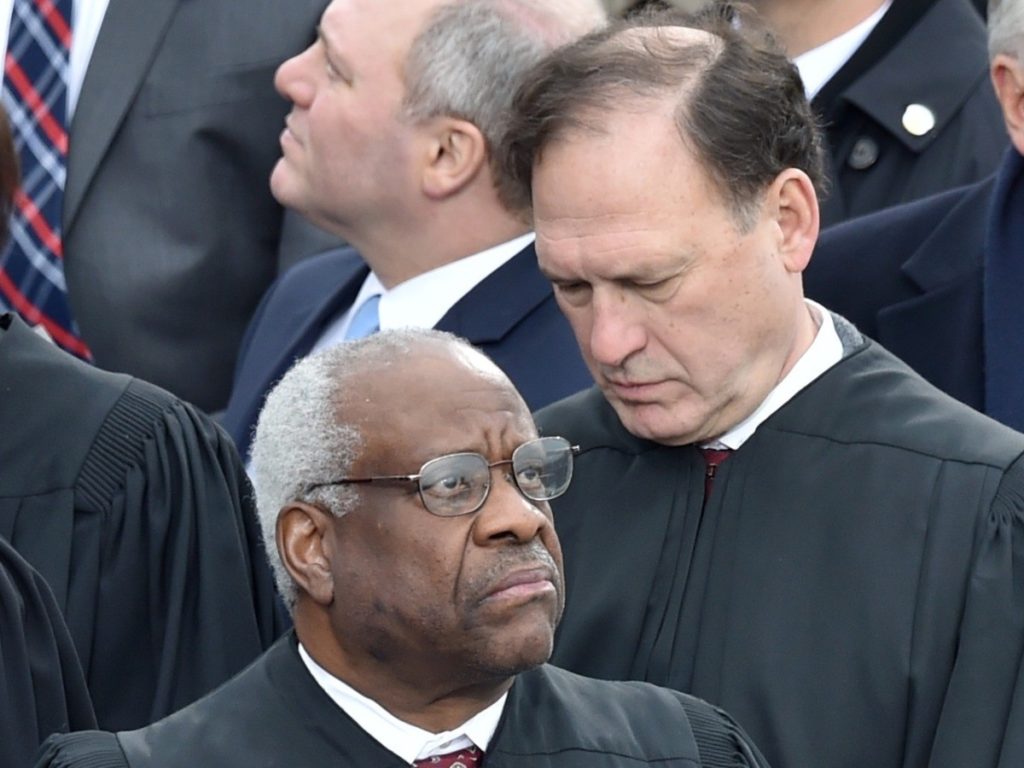The shadow docket and the party of death

The Supreme Court continues to strike down COVID regulations that apply to churches, although they do not treat churches differently than genuinely similar secular institutions and there is no evidence that they were motivated by religious animus, and it also refuses to even explain why or what the standard being applied is:
On Friday night, in a move that has become all too familiar, the Supreme Court blocked a ban on church services in Santa Clara County, California—the latest in a line of shadow docket decisions limiting state and local COVID-19 restrictions on religious worship. The court’s brief, unsigned order was apparently decided by a 6–3 vote, with all three liberals dissenting. It contained exactly one sentence of legal analysis: “This outcome is clearly dictated by this Court’s decision in South Bay United Pentecostal Church v. Newsom.”
But what, exactly, was that decision? In South Bay, decided in February, the Supreme Court blocked California’s statewide ban on church services in COVID hot spots—again, by a 6–3 vote—but did not explain why. There was no majority opinion revealing the court’s reasoning, as there usually is when the court makes law. Instead, four justices wrote separate concurring opinions proffering their own preferred theories of the case, with various others joining in. Yet in Friday’s order, the Supreme Court insisted that this confusing, scattershot patchwork of opinions “clearly” rendered Santa Clara County’s regulation unconstitutional. Even though no one knows what the court actually held in South Bay.Even though Santa Clara County’s rule differed from California’s broader regulations in fundamental ways. And even though the most plausible interpretation of SCOTUS’s recent COVID decisions suggests that the conservative justices have quietly overruled precedent that, in theory, still remains binding on the lower courts and requires them to uphold laws that place only incidental, nondiscriminatory burdens on religion.
What are state and local officials attempting to fight the deadliest pandemic in a century supposed to do with this sprawling mess? Can they craft any public health restriction on religious services that will hold up to this court’s scrutiny? The Supreme Court’s COVID jurisprudence might be incoherent, but its underlying message is relatively clear: Religious exercise now gets special benefits above and beyond all other First Amendment activities. Why? We don’t really know.
[…]
This is doctrine built of vapors. There’s no road map, just the shrugging sense that this is all perfectly obvious to all and sundry. And the fact that each of these cases is rushed through as an “emergency”—despite the fact that the Santa Clara regulation, like those in some previous cases, was poised to expire in days or weeks—means that religious liberty exists in a persistent state of exigent crisis. The justices, under this guise of emergency, don’t explain, and the rest of us are denied the benefit of full briefing, oral arguments, and careful deliberation. SCOTUS will never admit that it values free exercise above all other rights, but it demonstrates its favoritism by fast-tracking religion cases to the detriment of orderly judicial process.
This cavalier treatment of democratically accountable public officials would be bad in any context, but is absolutely disgraceful during a historic pandemic.
And, needless to say, it looks even worse in the context of the Court upholding Trump’s anti-Muslim travel ban although the religious animus was proven beyond and reasonable doubt and the security threat was completely imaginary.


